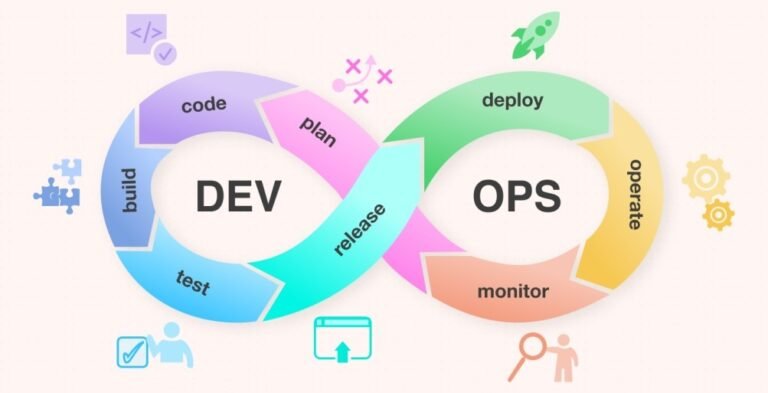
In todays fast paced software world, companies must deliver quality products to stay competitive. DevOps, acts as bridge between development and operations teams, has emerged as a solution to this challenge. DevOps is one of the core components of the DevOps process. This blog will provide a brief overview of DevOps deployment and how it functions.
DevOps deployment refers to the process of releasing code changes, features, or updates to a production environment in a manner that is automated, repeatable, and reliable. It is an integral part of the DevOps pipeline, where the focus is on delivering applications and services at high velocity. This enables organizations to evolve and improve products at a faster pace than traditional software development processes.
Moreover, in DevOps, deployment is not just a one-time event but a continuous process. As soon as the developers write and test the code, they can automatically deploy it to the production environment. In contrast, traditional methods involved deployments at fixed intervals, often leading to significant downtime and high risks of failure.
DevOps deployment involves several key components. Each make the deployment process seamless and efficient. These components include:
The DevOps deployment process consists several well-defined stages. Each stage plays a crucial role in ensuring that code is deployed efficiently and reliably. Let’s explore these stages:
The deployment process begins when developers commit their code to a shared repository, such as Git. After that, the code commit automatically triggers the build process. During this stage, the system compiles and resolves all the dependencies. Consequently, the build process makes sure that the code is ready for testing and deployment.
After the code is built, it goes through a series of automated tests, including unit tests, integration tests, and end-to-end tests. The main purpose of these tests is to find out whether there are any issues or bugs in the code before it is deployed to production. If any tests fail, the deployment process is stopped at a time. Afterwards, the code is sent back to the developers for removing those bugs.
In the CI/CD pipeline, the code that passes all tests is automatically packaged and prepared for deployment. Moreover, the CI/CD pipeline automates the entire process of code integration, testing, and deployment. This ensures that new features or updates can be released to production quickly and reliably.
Before deploying the code, the necessary infrastructure must be provisioned. With Infrastructure as Code (IaC), automates this process, allowing teams to set up and manage infrastructure consistently across different environments. IaC tools like Terraformor AWS CloudFormation are commonly used for this purpose.
Once the infrastructure is ready, the system automatically deploys the code to production environment. This step is typically automated to minimize the risk of human error. Moreover, several Deployment strategies such as Blue-Green Deployment, Canary Deployment, and Rolling Deployment help to ensure a smooth and controlled release of new features or updates.
After deploying code to production, teams use monitoring tools to track the performance and health of the application. They actively monitor metrics such as response time, error rates, and resource utilization. This helps confirm that deployment was successful and that the application is performing as expected. If any issues are detected, the system triggers alerts, and the DevOps team can take immediate action for troubleshooting .
In addition to monitoring, feedback from end-users plays a vital role. This feedback often identify issues that may not have been caught during testing . Furthermore, it provides insights into how the new release is being received by users.
The DevOps deployment process offers several benefits to organizations, These include:
DevOps deployment is a critical component of the DevOps methodology, as it enables organizations to deliver high-quality software quickly and efficiently. Through automation and usage of leveraging tools like CI/CD pipelines, Infrastructure as Code, and automated testing, teams can reduce the risk of errors, improve collaboration, and achieve faster time to market. As the demand for rapid and reliable software delivery continues to grow. DevOps deployment will play an increasingly important role in helping organizations stay competitive in the digital age.